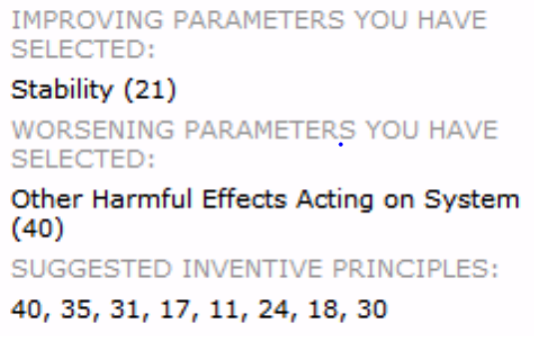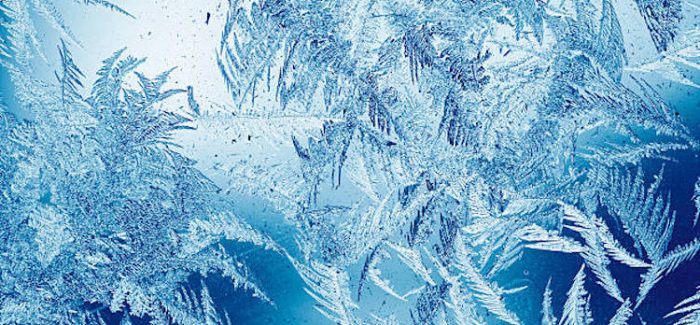Patent of the Month – Reducing Ice Crystal Formation
Editor | On 07, Nov 2018
Darrell Mann
 Our patent of the month this month is US9,986,733, granted to Bay Area start-up, X-Therma (x-therma.com, ‘biomimetic nanotech’) on the 5th of June. Here’s what the company has to say about the problem being solved in their invention:
Our patent of the month this month is US9,986,733, granted to Bay Area start-up, X-Therma (x-therma.com, ‘biomimetic nanotech’) on the 5th of June. Here’s what the company has to say about the problem being solved in their invention:
Cryoprotective agents (CPAs) are compounds that when present in solution can reduce or inhibit ice crystal formation in solutions exposed to sub 0.degree. C. temperatures. Current CPAs include small molecules (often referred to as penetrating CPAs), synthetic polymers, and antifreeze proteins.
Organ transplantation is currently the best treatment for end-stage organ failure in terms of survival, quality of life, and cost effectiveness. Unfortunately, a steep gap exists between supply and demand of organ transplants, and is one of the major medical obstacles that forces patients of debilitating disease to suffer low quality of life over a long period wait time. The apparent lack of organs is due to considerable waste from the absence of a reliable preservation method. In fact, over 50% of lungs, pancreas, and hearts remain unharvested from deceased donors.
In order to properly preserve organs, they have to be flushed with a preservation solution to remove blood and stabilize the organs. Even once stabilized in the preservation solution, there is only a limited time available for organ allocation, transportation, and transplantation after removal from the donor (.about.6-12 hours). This small timeframe results in most organs going to local patients because remote patient matches often cannot be confirmed in the limited time. As a result of this shortage and in spite of laws which exist in almost all countries prohibiting the sale of one’s organs, illicit organ trade and human trafficking has risen to supply demand.
Current penetrating CPAs used in organ preservation include ethylene glycol, 1,2-propanediol, dimethyl sulfoxide, formamide, glycerol, sucrose, lactose, and D-mannitol, generally among others. In order to reduce or inhibit ice crystal growth at organ preservation temperatures, the effective concentration of the penetrating CPAs must be very high (.gtoreq.60% is often required). At such high concentrations these compounds can be toxic to the tissues they are attempting to preserve, and the massive removal of CPAs upon warming before transplantation can lead to irreversible cell death.
Other CPAs used to reduce or inhibit ice crystal formation include synthetic polymers and antifreeze proteins. Similar to the penetrating CPAs, each of these have their drawbacks. Synthetic polymers, for example, are not capable of permeating the cellular membrane. As such, synthetic polymer CPAs can only control extracellular ice formation. In order to effectively preserve the biological sample, ice crystal formation must be controlled both inside and outside the cell. Naturally-occurring antifreeze proteins, such as those isolated from fish, plants, or insects, are highly effective at preventing ice formation, but current antifreeze proteins that are available are of low purity and are extremely expensive. Additionally, the use of antifreeze proteins to preserve a biological sample introduces a potential source of immunogenicity.
As such, there is a need in the art for novel non-toxic compounds to effectively reduce or inhibit ice crystal formation at sub 0.degree. C. and cryogenic temperatures.
Learning that there’s only a 6 to 12-hour window of opportunity for donated organs to travel from donor to recipient is a fairly shocking number. Increasing this number is clearly a great problem to work on. The contradiction, based on this background description is the amount and toxicity of chemicals used to prevent organ-destroying ice particle formation while organs are chilled. Here’s how we can best map the problem onto the Contradiction Matrix:

And here’s how chemist and CEO, Xiaoxi Wei, solved the problem:
The present invention is based, in part, on the surprising discovery that N-substituted biomimetic amino acid polymers (peptoids) and peptoid-peptide hybrids have ice crystallization inhibition properties. Provided herein are polymers for reducing or inhibiting ice crystal formation at sub 0.degree. C. and cryogenic temperatures. These polymers are useful in making cryoprotectant solutions.
In other words, a classic Principle 35, Parameter Change solution.
Or, digging a little deeper…
…In another aspect, the present invention provides a peptoid-peptide hybrid comprising a peptoid polymer described herein and one or more amino acids, wherein the one or more amino acids are located at one or both ends of the peptoid polymer and/or between one or more peptoid monomers. In some embodiments, the one or more amino acids are selected from the group consisting of alanine, cysteine, aspartic acid, glutamic acid, phenylalanine, glycine, histidine, isoleucine, arginine, lysine, leucine, methionine, asparagine, proline, glutamine, serine, threonine, valine, tryptophan, tyrosine, and a combination thereof. In particular embodiments, the one or more amino acids are selected from the group consisting of isoleucine, leucine, serine, threonine, alanine, valine, arginine, and a combination thereof.
…which sounds rather like Principle 40.
As ever, the trick with these kinds of chemistry problem is knowing what Parameter Change and what Composite are going to be useful amongst the millions of possible combinations. The fact that X-Therma have found what sounds like to be a very elegant solution to a very generalizable problem suggests to me that their future is bright. Organ transport is an archetypal ‘high value niche’ launch opportunity. Looking at their website, follow-on applications, where ice-formation is also a big problem – from pipelines, to ice-cream to anti-aging creams – look like they offer up a bright future.
We like this one a lot.

